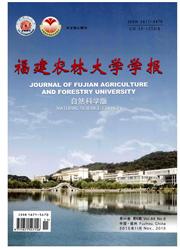

 中文摘要:
中文摘要:
针对已公布的18个甘蔗花叶病毒(SCMV)全基因组序列,利用MEGA 5.1分析了其11个蛋白(P1、HC-Pro、P3、6K1、CI、6K2、VPg、NIa-Pro、Nib、CP-C和多聚蛋白)编码基因所受的选择压,并结合其编码蛋白的功能,预测了部分基因在SCMV进化过程中的角色和变异位点.结果显示:P1和CP-N端的变异性程度较大,P1蛋白多样性最高;CP-C端变异性和多样性均较低;PIPO受到的选择压最小,但多样性最低,可能是由于PIPO与P3共用一段编码序列.来源于甘蔗的SCMV多聚蛋白的第2 853、2 897和2 904个氨基酸位点(在CP中部)分别为T、R和E,而来源于玉米的SCMV多聚蛋白对应的氨基酸位点分别为S、K和D,表明这3个位点具有寄主依赖性.
 英文摘要:
英文摘要:
The population structure and phylogenetic analysis were conducted on 18 fully sequenced Sugarcane mosaic virus( SCMV)isolates. MEGA 5. 1 was applied to evaluate the selective pressure of 11 genes encoding regions,i. e. P1,HC-Pro,P3,6K1,CI,6K2,VPg,NIa-Pro,Nib,CP-C and polyprotein. Basing on the known function of genes from Potyvirus genome,we predicted the potential roles and nucleotide substitutions sites of the 11 genes. The results were as following: P1 and N terminal of CP( CP-N) demonstrated the maximum variability while P1 showed the highest diversity among the tested SCMV isolates. However,the C terminal of CP( CP-C) displayed the minimum variability and diversity. PIPO was under the lowest selective pressure and diversity,which may be attributed to PIPO sharing the same encoding region with P3. Also,the 2 853 th,2 897 th and 2 904 th amino-acid residues of the polyprotein from SCMV sugarcane isolates presented different patterns comparing to the isolates from maize. The corresponding aminoacid residues were T,R and E in the polyprotein of SCMV isolated from sugarcane,but S,K and D for those isolated from maize,respectively. The distinguished pattern of these three amino-acid residues sites demonstrated strong host preference.
 同期刊论文项目
同期刊论文项目
 同项目期刊论文
同项目期刊论文
 期刊信息
期刊信息
